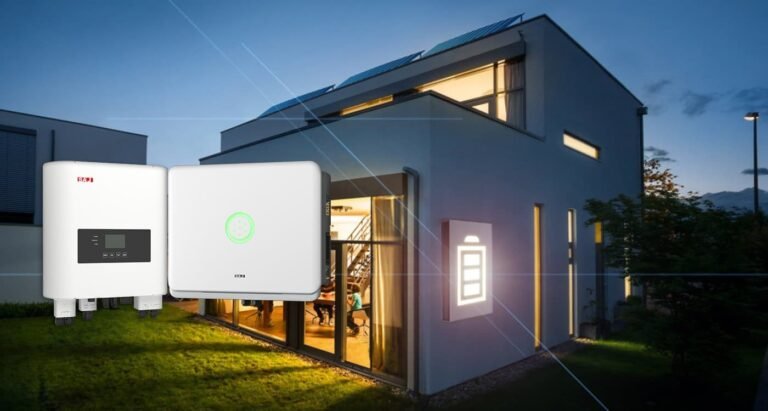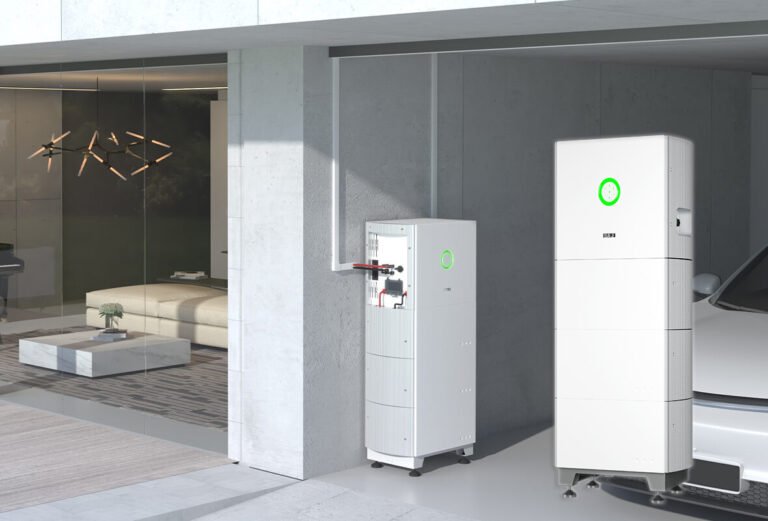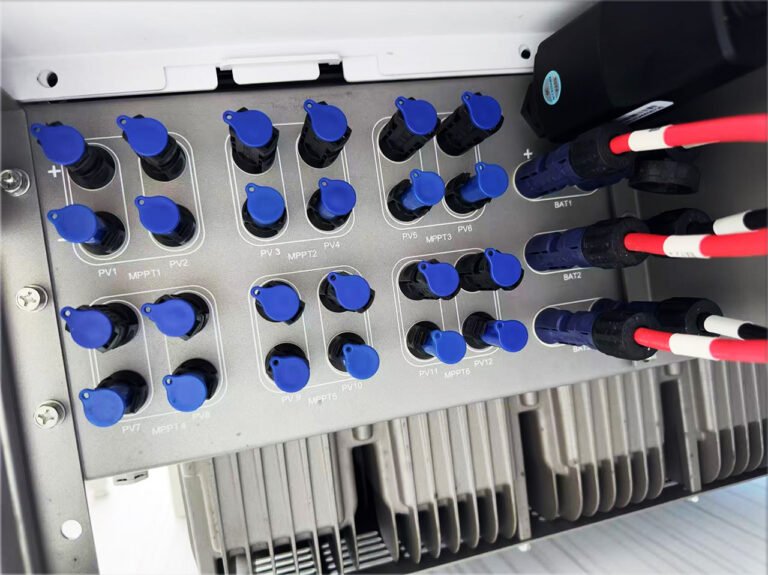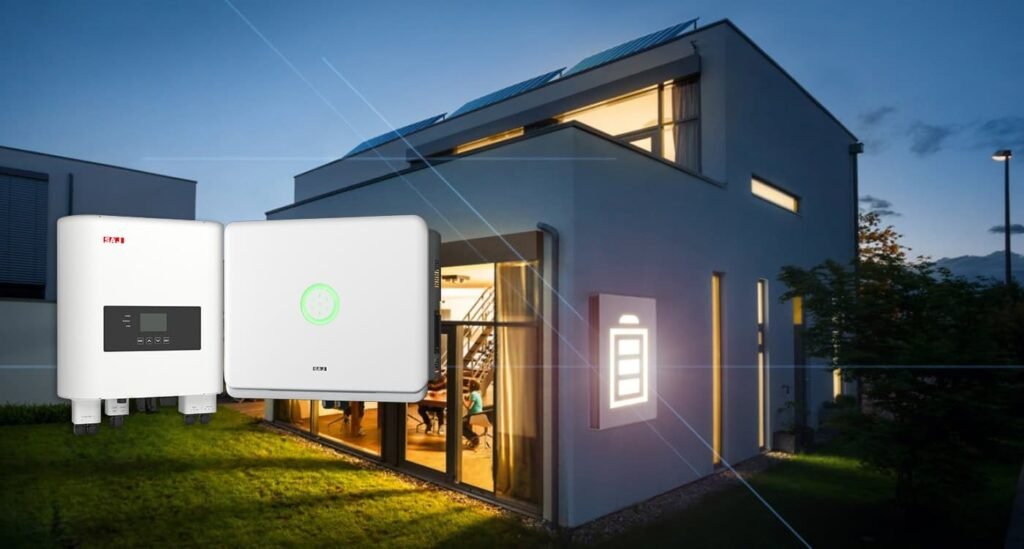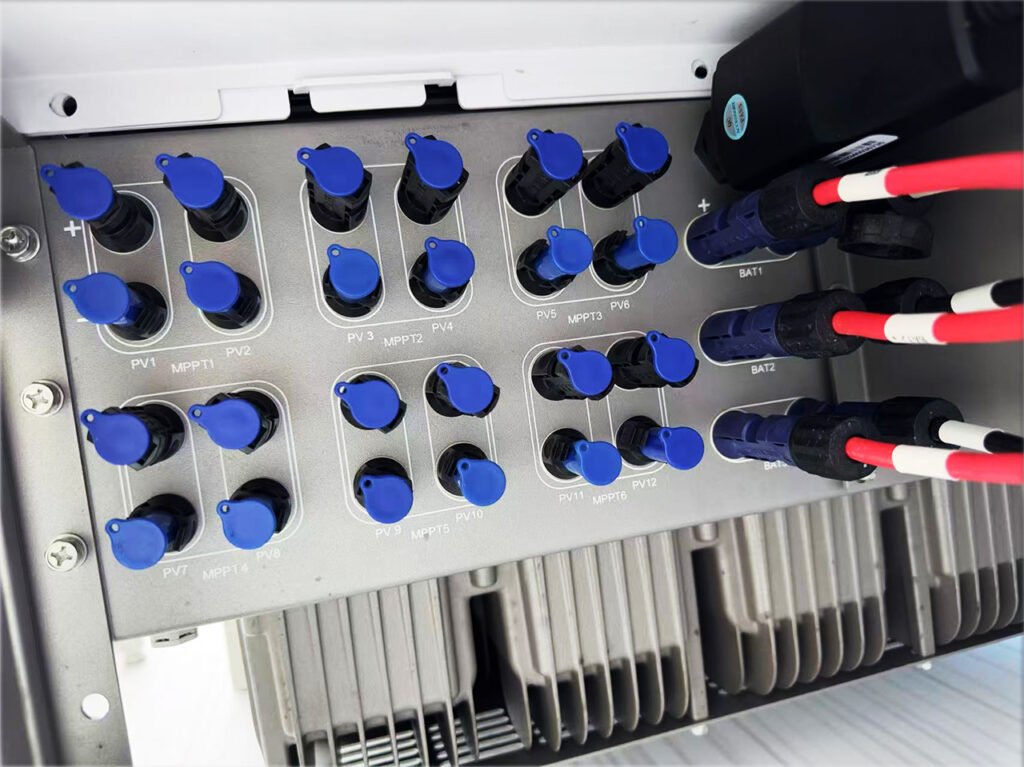So, you’re thinking about solar power, and maybe you’ve heard whispers about "storing sunshine." It sounds cool, right? But what does it actually mean for your day-to-day, whether at home or for your business? And how do you make sure you’re getting something genuinely useful, not just another gadget?
Let’s explore this together. We’ll unpack what solar energy storage is all about, why it’s becoming such a hot topic, and how some newer all-in-one systems, like those from SAJ, are making it much easier to get on board. No confusing tech-speak, just real benefits and straightforward talk.
Solar Storage Systems: In Simple Terms, What Is It?
Ever wished you could bottle up that bright midday sun and use it when the clouds roll in, or after dark? That’s pretty much the core idea of a solar energy storage system.
Essentially, a solar energy storage system lets you hang onto the extra power your solar panels generate during sunny times, so you can use that free energy whenever you want – maybe at night, or if the main power grid ever goes down.
It’s like having a personal, rechargeable power reserve for your place.
You’ll usually find a few key parts working together:
- Solar Panels: These are your sunshine catchers, turning light into DC (Direct Current) electricity.
- Battery: This is where your saved-up sunshine power lives until you need it.
- Inverter: This smart box changes the DC power from your panels and battery into the AC (Alternating Current) power that nearly all your appliances and gadgets use. In these storage setups, you’ll often hear about "hybrid inverters" that manage the flow of energy between your panels, battery, and home.
- Battery Management System (BMS): Think of this as the battery’s bodyguard. It keeps it running safely and helps it last as long as possible.
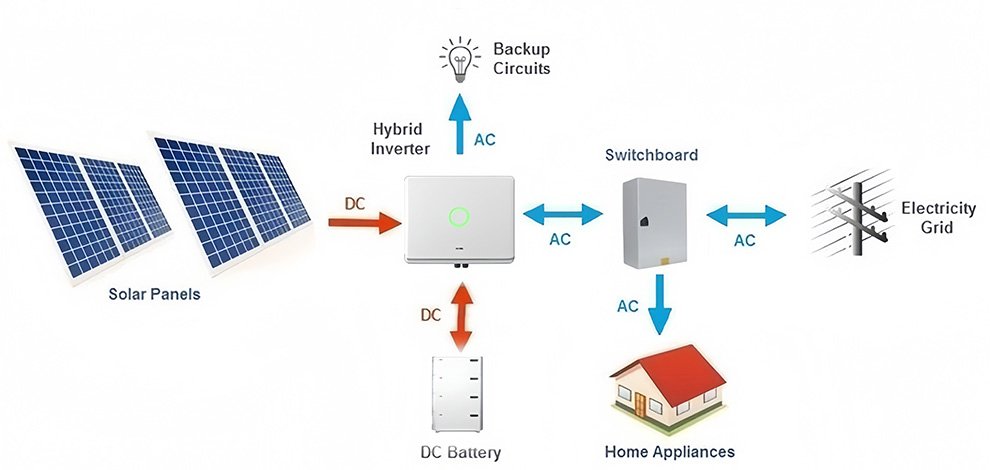
In the past, getting all these bits to play nicely together could be a bit of a puzzle. But thankfully, things are getting much simpler with all-in-one approaches.
Why is Solar Storage Increasingly Important for Modern Homes/Businesses?
You might be thinking, "Okay, solar panels make sense. But do I really need to add storage? Sounds like another expense." It’s a fair question! But the way we use and pay for energy is changing pretty fast, and what used to be a ‘maybe someday’ upgrade is quickly becoming a ‘why didn’t I do this sooner?’ solution for many.
More and more, folks are finding that solar storage is key to feeling truly in control of their energy, especially with electricity costs doing a cha-cha and the grid sometimes feeling a bit shaky. It’s all about using your own clean energy to the max and future-proofing your power supply.
Here’s what’s making it such a big deal:
Those Pesky Energy Bills: Let’s face it, nobody enjoys opening a surprisingly high electricity bill. Grid power prices can be a rollercoaster.
What’s interesting is how storage can help smooth out those bumps. For example, in places like Germany and Spain, the price difference between peak and off-peak electricity can be over €0.20/kWh.
If you can store your cheap solar energy and use it when grid prices are high, you could see the payback time for your storage system drop to around 6-9 years. It’s like a double win: using your own solar and sidestepping those peak rates.
- When the Lights Go Out (and They Do!): Whether it’s a storm or a local fault, power outages are a pain. For a business, it can mean serious money down the drain – something like €8,000 per megawatt-hour lost is an average some EU industries face. Storage basically gives you an ‘insurance policy’ that keeps things running.
- Taking Back Control: Why be totally reliant on the utility company when you could be generating and storing your own clean power? It’s a great feeling of independence.
- Getting Full Value from Your Solar: If you don’t have storage, extra solar power you generate might just go back to the grid for not much in return. Storage lets you keep and use every precious kilowatt-hour.
- Doing Your Bit for the Planet: Many of us want to live a bit greener. Using more of your own stored solar power is a fantastic way to do that.

So, you can see how storage isn’t just an add-on; it’s more like a key that unlocks a smarter way to handle your energy.
What Real Benefits Does Installing Solar Storage Offer?
Okay, so storage is a big deal. But what does that mean for you in practical, everyday terms? What cool stuff actually happens when you get one?
When you install solar storage, you’re likely to see some awesome changes: your electricity bills could shrink, you’ll have backup power when the grid fails, you’ll use more of your own clean solar energy, and you might even tap into new ways to earn from your system. It’s about your energy doing more for you.
Let’s look at these perks:
1. Say Hello to Smaller Electricity Bills
This is usually perk number one on everyone’s list.
Your Own Solar, Anytime: Imagine using the sun’s energy captured during the day to power your evening movie night. That’s "self-consumption," and it’s a beautiful thing.
Outsmarting Peak Rates: If your utility charges more during certain hours, storage lets you use your stored energy then, instead of paying those premium prices. This "peak/valley arbitrage" can make a real difference.
2. Power Through Outages Like a Boss
No more fumbling for candles!
- Instant Backup: When the grid hiccups, a good storage system can kick in so fast you might not even notice. Lights stay on, your fridge keeps humming, and essential tech keeps running. For businesses, avoiding even a short outage can be a massive financial relief.
3. Get Every Ounce of Goodness from Your Solar Panels
Don’t let that free energy go to waste.
- Instead of sending surplus solar back to the utility for pennies (if anything), you store it and use it yourself. This makes your solar investment work much harder for you.
4. Feel Good About Your Energy Choices
It’s a win for your conscience too.
- Using more of your own solar power means you’re relying less on whatever powers the main grid, which often includes fossil fuels. It’s a solid step towards a lighter carbon footprint.
5. Your Battery Could Even Earn You a Little Something
This is a newer, but exciting, development.
Virtual Power Plants (VPPs): In some areas, you can let your battery help the main grid stay stable.
Utility companies or special "aggregators" might pay you to use a tiny bit of your stored energy at critical times. With platforms like SAJ’s eSolar/eManager, this is becoming more accessible.
Some folks in the UK, for example, have seen an extra income of around £120 a year for every 10 kWh of battery they offer to a VPP – and that’s on top of their usual savings. It’s like your battery has a side hustle!

It’s pretty clear that adding storage isn’t just about having batteries; it’s about a smarter, more resilient, and often more rewarding way to power your life.
SAJ All-in-One Systems: How They Help You Achieve These Benefits with Ease
So, we’re all on board with why storage is a smart move. But how do you actually get these benefits without it turning into a massive, complicated project? This is where all-in-one systems, like the ones SAJ offers, really come into their own.
SAJ All-in-One systems make getting storage benefits much easier because they package the inverter, battery, and smart controls into one neat, optimized unit. This cuts down on fuss, potential installation costs, and helps everything run more smoothly.
Here’s a peek at how this integrated approach is a bit of a game-changer:
The Old Way (Can Be a Bit of a Jigsaw Puzzle)
Not too long ago, if you wanted solar storage, you (or your installer) would often have to:
- Pick out a solar inverter.
- Choose a separate battery bank.
- Find a compatible Battery Management System (BMS).
- Maybe add extra boxes and a whole lot of wiring to connect everything.
This could sometimes lead to:
- Tricky Installations: More parts, more wires, more time spent by the electrician.
- "Will-they-won’t-they" Compatibility Worries: Hoping all the different bits from different brands would talk to each other perfectly.
- Extra "Hidden" Costs: All that extra labor and small parts (the "balance of system" or BOS) can add up.
- A Bit of a Clutter: More boxes can mean more space taken up.
The SAJ All-in-One Way (More Like "Plug and Smile")
SAJ basically said, "Let’s make this simpler and smarter," by putting all the essential bits together in one well-designed package.
You’ll find that this all-in-one design can directly trim the upfront costs (CAPEX) by simplifying the whole system integration part. Take something like the SAJ HS3: the main power bits (PCS), the battery brain (BMS), safety features, and even an EV charger are all in one slim unit.
This often means far fewer wiring connections on-site – we’re talking a potential reduction of over 35%. For installers, this can mean getting a system like the HS3 up and running in under 2.5 hours, based on what we’ve seen in some Sunriver projects.
That saved time and reduced need for extra bits and pieces can often knock about 8–12% off the Balance of System costs. It’s like getting a discount just for choosing a smarter design.
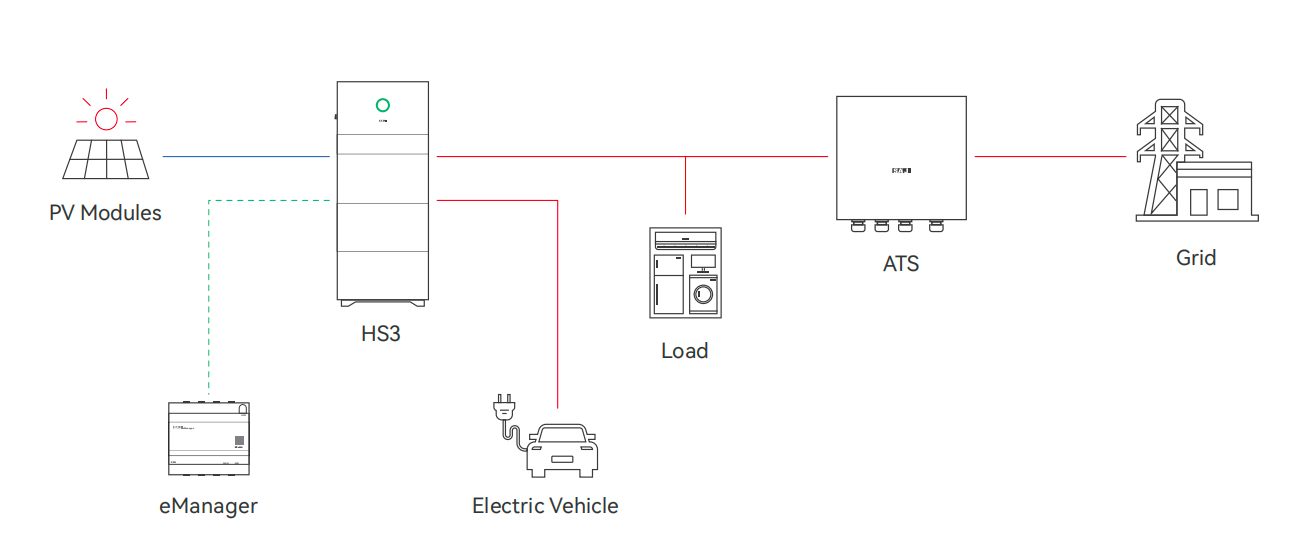
Built-in "Peace of Mind" with Compliance
Navigating local grid rules and safety standards can sometimes feel like you need a special decoder ring.
What’s nice is that SAJ All-in-One systems often come with important safety features already built in, helping to address these complexities. These features can include:
- AFCI (Arc Fault Circuit Interrupter)
- CO monitoring
- Type II SPDs
This built-in approach can be a huge time-saver, helping to meet both grid and fire safety requirements more easily.
And here’s a neat little bonus: sometimes, having this kind of certified, compliant gear can help you get slightly better rates on green loans – maybe even 0.5% to 1% lower than with less integrated or non-certified setups.
SAJ All-in-One vs. Separate Components
| Feature | Separate Components | SAJ All-in-One (e.g., HS3) |
|---|---|---|
| Installation | Can be complex, multiple units | Simpler, often single unit, less wiring |
| Time | Generally longer | Can be much faster (e.g., <2.5 hrs for HS3) |
| Space | Takes up more room | More compact, sleek design |
| BOS Costs | Can be higher | Often lower (by ~8-12% from integration) |
| Compatibility | Needs careful matching | Factory-optimized and guaranteed |
| Features | EV charger, etc., added separately | Often integrated (e.g., HS3 EV charger) |
So, you see, SAJ’s approach is about more than just looking sleek; it’s designed to be a more efficient, cost-effective, and generally more pleasant way to get all the good stuff from energy storage.
Choosing the Right SAJ Storage: Key Factors to Consider
Alright, so an all-in-one system from SAJ sounds pretty good. But which one is your perfect match? It’s definitely not a case of "one size fits all."
To pick the right SAJ storage for you, you’ll want to think about how much energy you use, what you need backup power for, the space you have, any special features you’d like (hello, EV charging!), and your budget. Getting these right helps you find the sweet spot in SAJ’s range (HS2, HS3, CHS2).
Here are the main things to chat through with your installer:
1. Your Daily Energy Appetite
How much electricity do you typically use in a day? Your utility bills (showing kWh per day or month) are a good starting point. A larger home or a busy business will naturally need more storage.
When’s your "peak" energy use time? If your house is buzzing with activity in the evenings, a decent-sized battery to store that daytime solar goodness will be your best friend.
2. What Needs to Stay On During a Blackout?
- Just the basics? (Lights, fridge, Wi-Fi) Or do you need more power for things like an air conditioner, medical equipment, or to keep a small business running? This will guide the inverter’s power output (kW) and how much battery capacity (kWh) you’ll want.
3. What’s It For? (And What Cool Extras Do You Want?)
For Your Home (General Backup & Bill Savings): The SAJ HS2 Series is often a fantastic starting point. It gives you reliable backup and helps you use more of your own solar. Plus, the batteries are modular, so you can often expand later (think 3kW – 10kW inverter power, with battery options up to 20/25kWh).
For the Smart Home with an EV: If you’ve got an electric car or are planning to get one, the SAJ HS3 Series is definitely worth a look. It neatly integrates an EV charger (7/11kW) with smart home energy management (3kW – 12kW inverter power, also with modular batteries).
For Businesses & Bigger Needs (Commercial & Industrial – C&I): If you need serious capacity, top-notch efficiency, and robust safety for a business, the SAJ CHS2 Series is the heavy hitter. These can scale up significantly (from 29.9kW – 50kW+ inverter power, with battery setups from around 60kWh way up to 4MWh or more).
4. Thinking About Your Budget and Future Returns
- What’s a comfortable investment for you right now?
Here’s where the flexibility of SAJ systems really shines, especially for managing your cash flow.
Both the HS2 and HS3 batteries often come in handy 5 kWh modules, so you don’t have to go all-in at once. You can start with what you need and add more later. For the bigger CHS2 systems, they’re designed so you can link multiple cabinets together, scaling up as needed.
I’ve actually seen this "phased approach" work beautifully for some businesses. For example, a factory in Italy started with about half the storage capacity they ultimately wanted. This let them grab some initial subsidies and then plan to expand their system with future budgets as their energy needs grew.
This approach cut their upfront investment by about 40% and even helped them secure a commitment for the later additions. It’s a really practical way to match your investment to your actual needs and finances.
5. Where Will It Live?
- SAJ All-in-One units are pretty compact and designed to look good, but you’ll still need a good spot for installation. This could be indoors (like a garage or utility room) or, for IP65-rated units, potentially a sheltered outdoor spot.
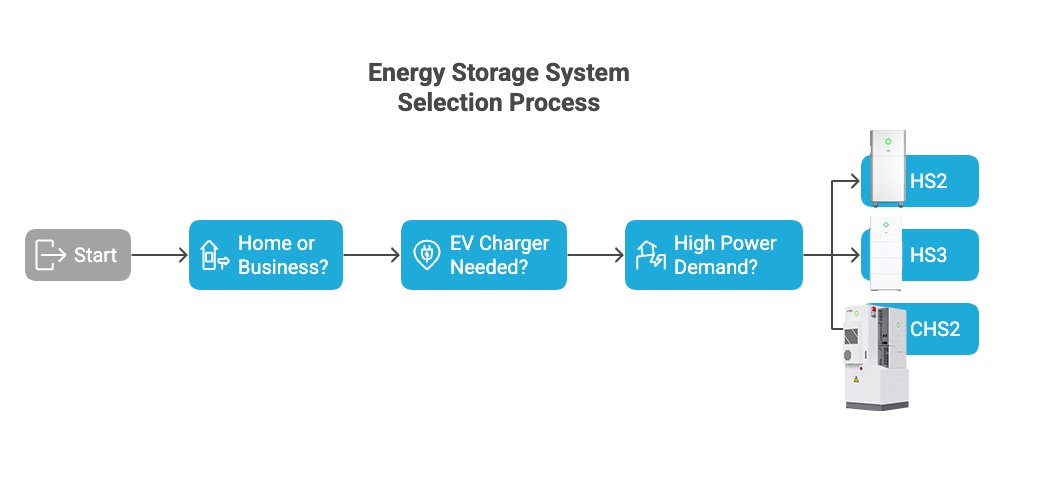
Taking the time to think these through will make it much easier to find your perfect SAJ All-in-One match.
Spotlight on SAJ HS3: When Storage Meets EV Charging
If you’re a homeowner, and especially if you’ve joined the electric vehicle (EV) wave (or are thinking about it), the SAJ HS3 All-in-One Energy Storage System is one of those products that just makes so much sense. It’s not simply a battery backup; it’s more like a central command for your home’s smart energy use.
What’s really neat about the SAJ HS3 is how it elegantly combines solar energy storage with a built-in EV charger and smart controls, making it super easy to use your solar power for everything, including your car.
Here are a few reasons the HS3 gets people excited:
Built-in EV Charger: This is a big one. It usually offers around 7kW (for single-phase homes) or 11kW (for three-phase) charging. Imagine plugging your car in at night and knowing it’s filling up with sunshine you collected during the day – often for free!
Smart Energy Brains: The HS3 is clever. Its Energy Management System (EMS) will try to use your own solar or stored battery energy first to charge your EV, only drawing from the grid if it really needs to. You can often even tell it to charge during specific off-peak hours to save even more.
Looks Good, Fits Well: It’s pretty slim (around 170mm thick), so it doesn’t look like a big industrial box in your garage.
"Plug and Play" Simplicity: As we’ve mentioned, installation is designed to be much more straightforward.
Grows With You: The battery part is modular (often starting from 5kWh), so you can add more capacity later if you get a second EV or your energy needs increase.
Keeps Safety in Mind: It includes thoughtful features like battery self-heating (handy in colder spots) and internal fire protection systems.
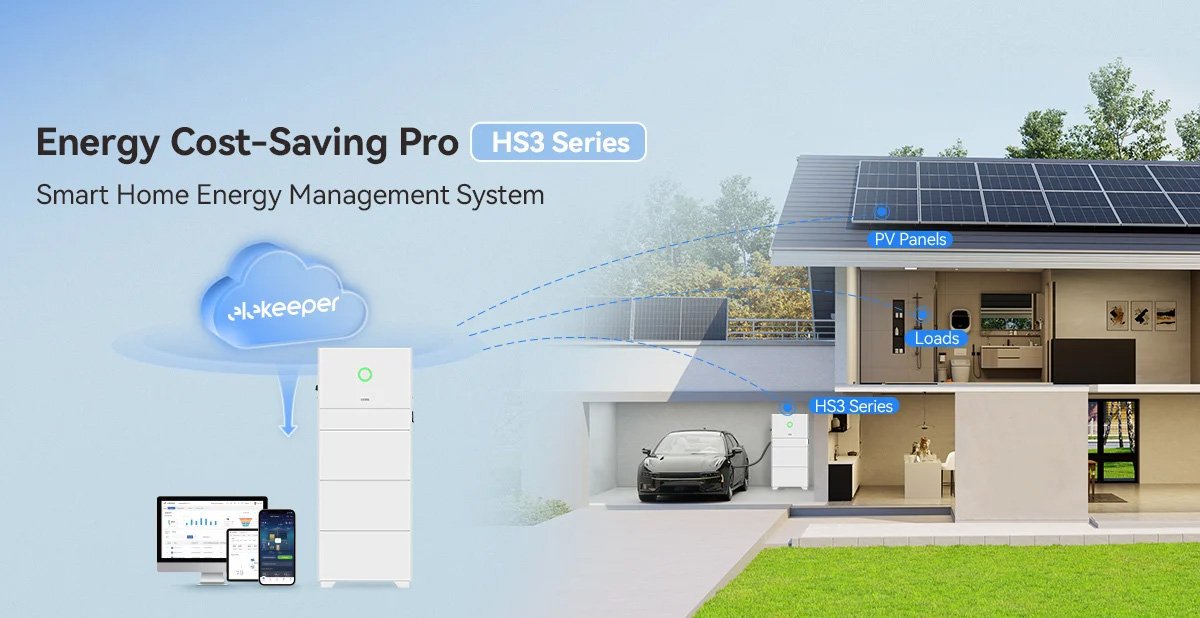
Picture this for a moment: your solar panels are soaking up the sun all day, and your HS3 is tucking away that extra power. You pull into the driveway, plug in your EV, and it quietly charges up overnight using that stored solar energy. The next morning, you head out, effectively running on sunshine, having paid next to nothing for your "fuel." That’s the kind of smart, efficient living the HS3 is all about.
SAJ Storage Installation & Maintenance: What You Need to Know
Whenever you’re looking at a significant upgrade for your home or business, it’s natural to wonder about the setup hassle and how much looking after it will need. The good news with SAJ All-in-One systems is that they’re designed to be pretty low-drama on both fronts.
Generally, SAJ All-in-One systems are quicker to install because everything’s integrated, and their LFP batteries are known for needing very little day-to-day maintenance, with most of the system health checks happening through the eSolar app.
Installation: Often Simpler Than You’d Guess
The All-in-One Perk: Because the main bits – inverter, battery, BMS (and often the EV charger in the HS3) – are already packaged together, there’s much less fiddly wiring and on-site setup compared to systems made of separate parts.
What I’ve noticed from seeing these systems go in, like with Sunriver Electric projects, is that an SAJ HS3 can often be installed in a remarkably short time, sometimes even under 2.5 hours. This isn’t just about saving a few hours of labor; it also tends to reduce the overall "Balance of System" (BOS) costs – that’s all the little extra bits and pieces that can add up with more complex setups.
Leave it to the Pros: Even though it’s simpler, getting a qualified solar and electrical professional to do the installation is still the way to go. They’ll make sure everything’s safe, up to code, and working perfectly.
Maintenance: Mostly Just "Check the App"
- LFP Batteries are Tough Cookies: SAJ uses LiFePO4 (LFP) batteries1, and one of their big advantages is that they’re very stable and have a long lifespan, so they don’t need much hands-on TLC.
- No Regular Tune-ups: Unlike, say, an old generator, there are generally no fluids to change or parts that need frequent swapping out.
Your Phone is Your Dashboard: The SAJ eSolar platform (which usually has an app for your phone and a web portal) is pretty much your main "maintenance" tool.
It lets you (and your installer, if you give them access) keep an eye on how your system is doing – how much energy you’re generating, storing, and using. If something unusual pops up, the system often flags it.
It’s quite impressive how this cloud-based approach to O&M (Operations & Maintenance) can turn what used to be a potential service cost into a way to keep your system running at its best.
Good remote monitoring can often spot and resolve things much faster than waiting for a physical call-out, saving everyone time and money.
- A Quick Look Now and Then: It’s always a good idea to just visually check the unit every so often to make sure nothing’s obviously amiss (like debris if it’s outside) and that any air vents are clear. Your installer will give you the full rundown.
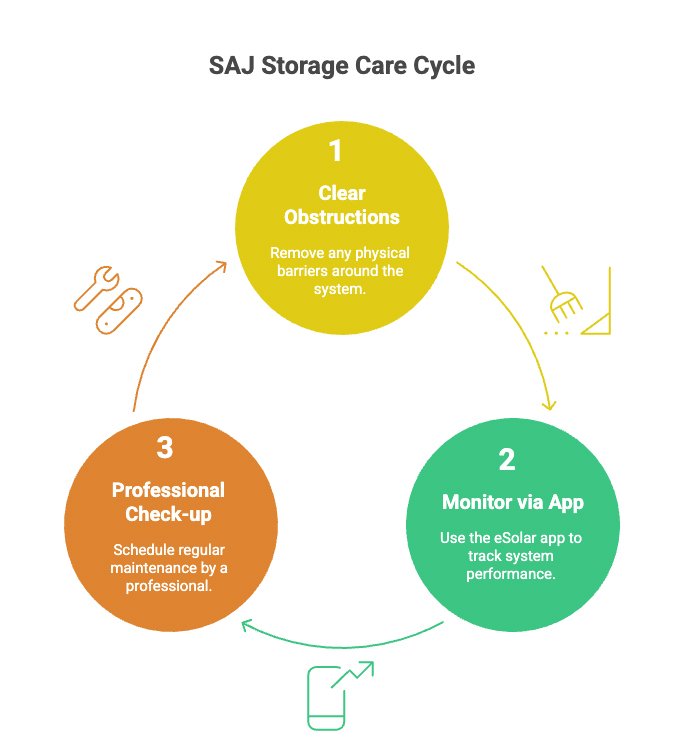
All in all, SAJ All-in-One systems are really built for a "set it up and let it do its thing" kind of experience, so you can enjoy the advantages without a lot of extra chores.
Key Takeaways: Embrace Smart Energy Living with SAJ Solar Storage
So, we’ve taken a good look at solar energy storage, from figuring out the basics to seeing how clever all-in-one solutions from SAJ are making it simpler and more rewarding than ever.
Here are the main things to keep in mind:
Solar Storage is a Game Changer for Your Energy: It’s not just some fancy tech anymore. It’s a truly smart way to cut down your electricity bills, have peace of mind with backup power during outages, and really make the most of every bit of clean energy your solar panels produce.
All-in-One Makes Perfect Sense: Integrated systems, like SAJ’s HS2, HS3, and CHS2 series, just take a lot of the traditional hassle out of getting solar storage.
They usually mean a quicker, more cost-effective setup, better performance because all the parts are designed to work together, and they generally look much neater too.
Plus, this integrated design is a big help in keeping those initial project costs (CAPEX) more manageable by cutting down on assembly and extra parts.
The Benefits Are Real and You’ll Feel Them: Whether it’s the satisfaction of a lower energy bill (thanks to using your stored solar when grid prices are high), the security of knowing you have backup power, or even the possibility of your system earning a bit through VPP participation, these aren’t just abstract ideas – they’re tangible advantages.
SAJ Has Options to Fit Different Needs: Whether you need something straightforward for your home (like the HS2), a smart hub that can also charge your EV (the HS3), or a robust solution for a business (the CHS2), there’s likely an SAJ All-in-One system that’s a good match. And the modular design of many of their batteries means you can often start with what you need and add more later.
You Can Trust the Tech: With LFP battery technology (known for safety and longevity) and a host of built-in protection features, SAJ systems are designed for reliable, safe operation over many years. And don’t forget, having systems that meet compliance standards can sometimes make getting financing a bit easier too.
This is Where Energy is Heading: Systems that cleverly combine storage with other smart features like EV charging, and that you can monitor and manage from an app (like SAJ’s eSolar), really are the future of how we’ll manage energy in our homes and businesses.
At the end of the day, **choosing to go with solar energy storage, especially a well-thought-out all-in-one solution, is about giving yourself more control over your energy, more resilience when the grid is unpredictable, and a way to live a bit more sustainably. It’s about using technology to power your life smarter.**
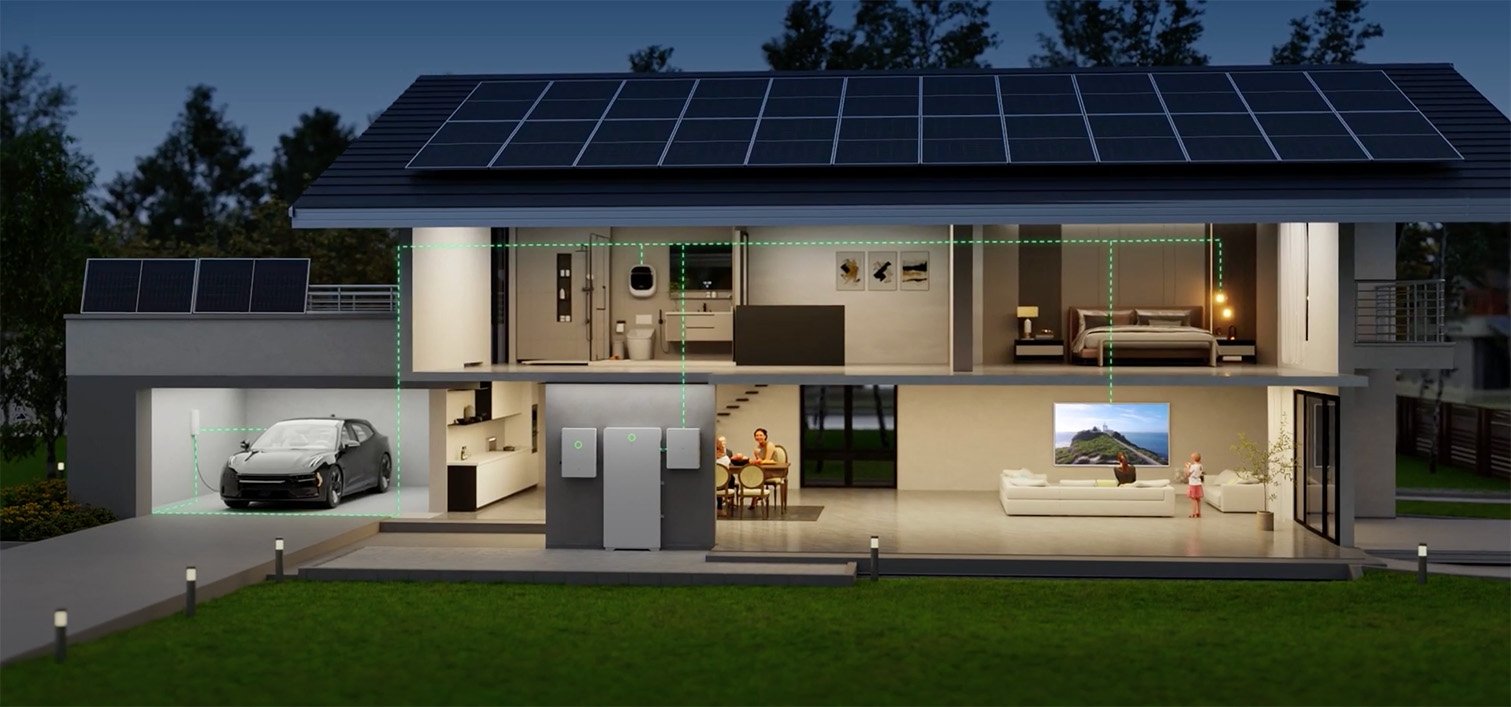
Making the move to solar energy with storage is a pretty big decision, but it’s one that can really empower you. You get more control, more security, and a great way to step into a smarter, more sustainable energy future. With options like SAJ’s All-in-One ESS, that future feels closer and more achievable than ever.
Learn about LiFePO4 batteries and their benefits, including stability and longevity, which make them ideal for energy systems. ↩



